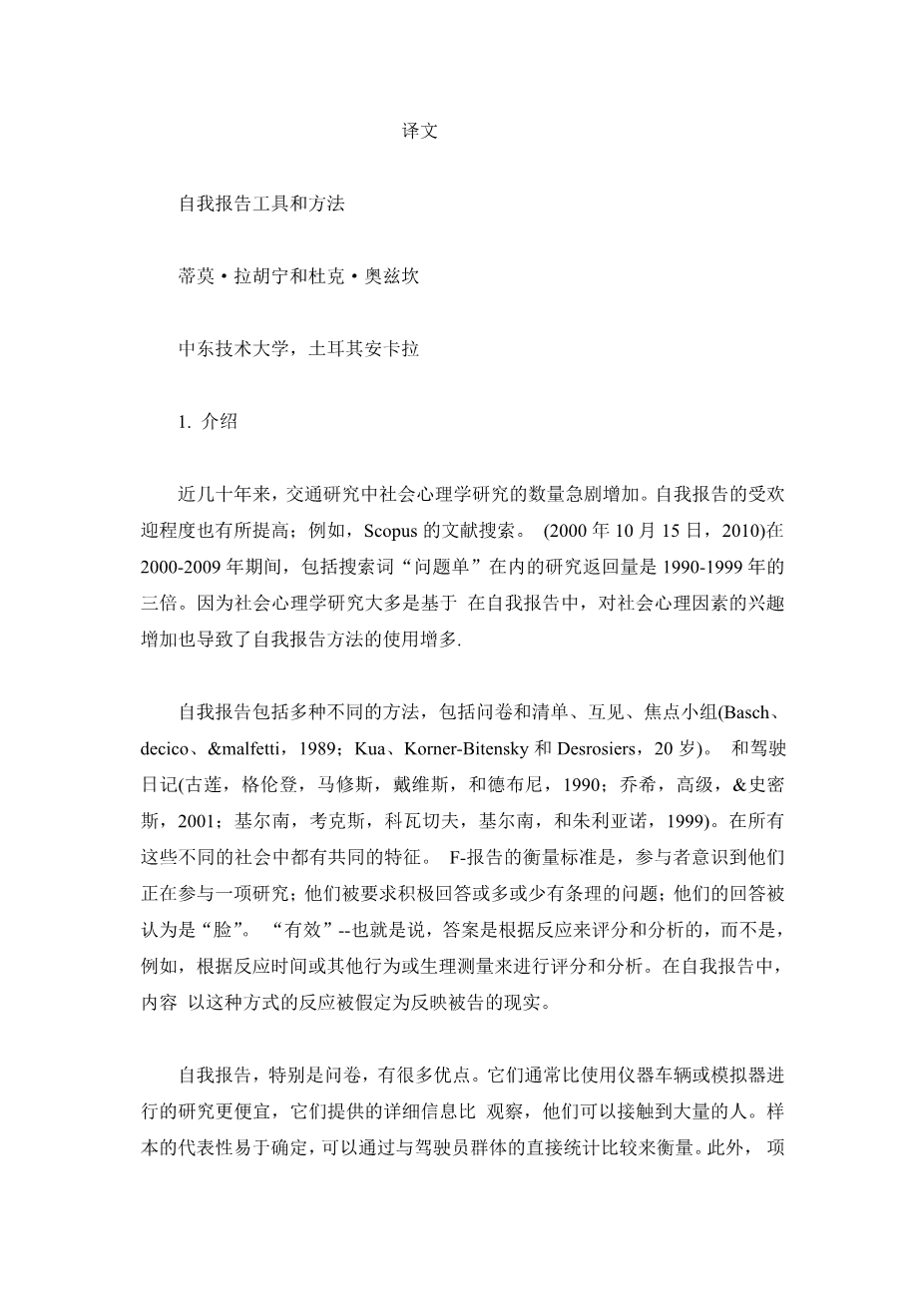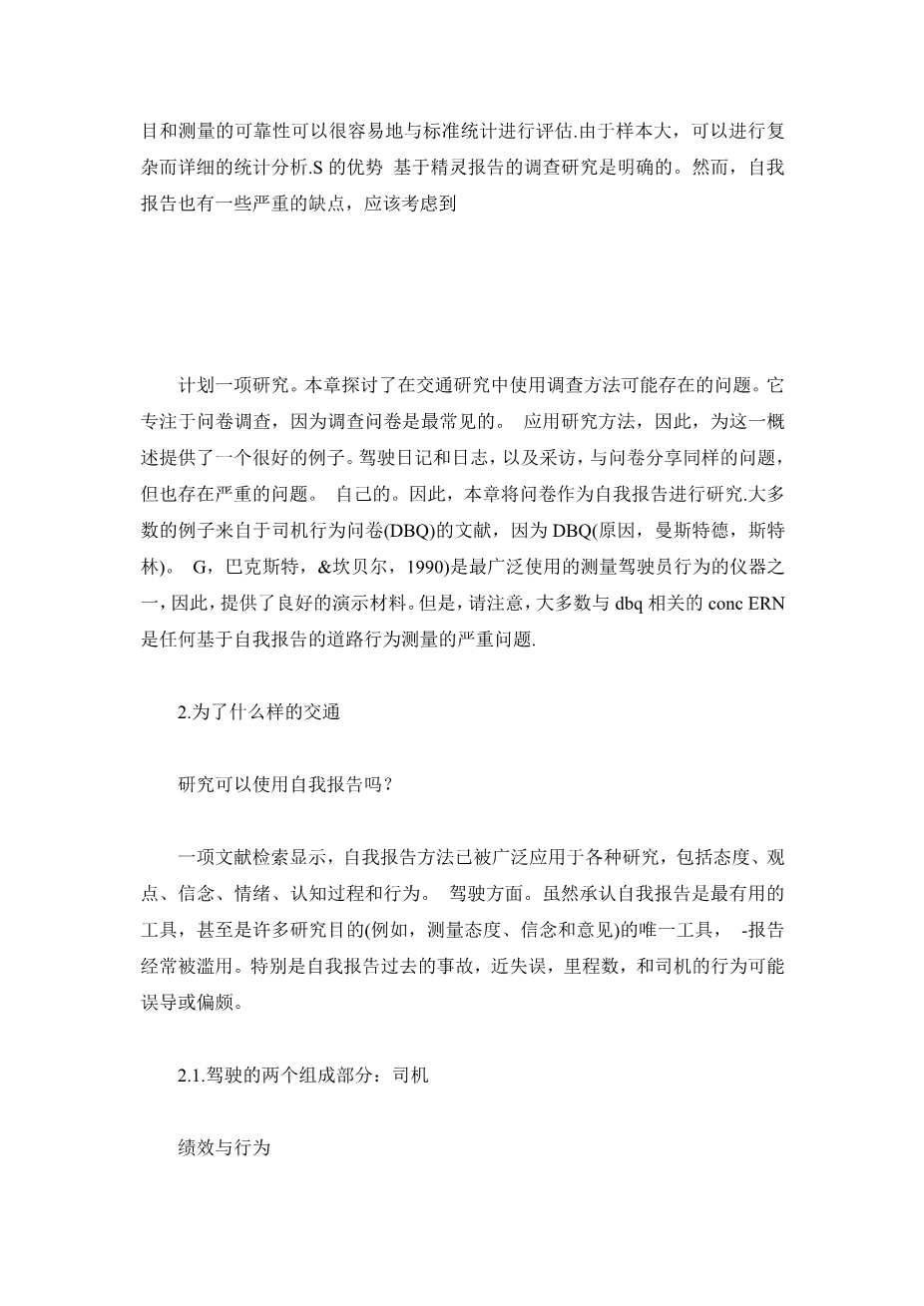Self-Report Instruments and Methods
Timo Lajunen and Tu¨rker O¨zkan
Middle East Technical University, Ankara, Turkey
In recent decades, the number of social psychological studies in traffic research has increased drastically. The popularity of self-reports has also increased; for example, a SCOPUS literature search (October 15, 2010) returned three times more studies for the time period 2000e2009 including the search word “Questionnaire” than for 1990e1999. Because social psychological studies are mostly based on self-reports, increased interest in social psychological factors has also resulted in the increased use of self-report methodology.
Self-reports include a great variety of different methods, including questionnaires and inventories, inter-views, focus groups (Basch, DeCicco, amp; Malfetti, 1989; Kua, Korner-Bitensky, amp; Desrosiers, 2007), and driving diaries (Gulian, Glendon, Matthews, Davies, amp; Debney, 1990; Joshi, Senior, amp; Smith, 2001; Kiernan, Cox, Kovatchev, Kiernan, amp; Giuliano, 1999). Common features in all these diverse self-report measures are that partici-pants are aware that they are participating in a study; they are asked to actively reply to more or less structured questions; and their responses are taken as “face valid”dthat is, answers are scored and analyzed based on the responses and not, for example, according to response time or other behavioral or physiological measurement. In self-reports, the content of the responses in this way is assumed to reflect a respondent’s reality.
Self-reports and especially questionnaires have many advantages. They are usually less expensive than studies using an instrumented vehicle or a simulator, they provide more detailed information than observations, and they can reach large numbers of people. Representativeness of the sample is easy to establish and can be measured with direct statistical comparisons to driver populations. Moreover, the reliability of items and measurements can be easily eval-uated with standard statistics. Due to large samples, complicated and detailed statistical analyses can be con-ducted. The advantages of self-report-based survey studies are clear. However, self-reports also have some serious shortcomings that should be taken into account when
planning a study. This chapter discusses the possible problems in using survey methods in traffic research. It concentrates on questionnaire studies because the survey questionnaire is the most often applied research method and, thus, a good example for this overview. Driving diaries and logs, as well as interviews, share the same problems with questionnaires but also have serious problems of their own. Therefore, this chapter concentrates on questionnaires as self-reports. Most of the examples are from Driver Behaviour Questionnaire (DBQ) literature because the DBQ (Reason, Manstead, Stradling, Baxter, amp; Campbell, 1990) is one of the most widely used instruments for measuring driver behaviors and, thus, provides good demonstration material. Note, however, that most of the DBQ-related concerns are serious problems of any road behavior measure based on self-reports.
RESEARCH CAN SELF-REPORT BE USED?
A literature search shows that self-report methodology has been used for a wide variety of research, including attitudes, opinions, beliefs, emotions, cognitive processes, and behaviorsdbasically any aspect of driving. While acknowledging that self-reports can be the most appro-priate tool or even the only tool for many research purposes (e.g., for measuring attitudes, beliefs, and opinions), self-reports are often misused. Especially self-reports of past accidents, near misses, mileage, and driver behavior can be misleading or biased.
2.1. Two Components of Driving: Driver
Performance and Behavior
Driving can be seen as being composed of two separate components, driving skills and driving style (Elander, West, amp; French, 1993), or, in other words, driver performance and driver behavior (Evans, 1991). Driving skills include those information-processing and motor skills that may be expected to improve with practice and training, i.e., with
Handbook of Traffic Psychology. DOI: 10.1016/B978-0-12-381984-0.10004-9 43
Copyright 2011 Elsevier Inc. All rights reserved.
44 PART | I Theories, Concepts, and Methods
driving experience (Elander et al., 1993). In addition to learning, driving-related skills can be considered to be affected by a driver’s general information-processing ability. The role of the driver’s general information-processing and motor ability is emphasized when some of those skills have declined either temporarily (e.g., driving while intoxicated) or permanently (e.g., Alzheimer’s disease).
The driving task can be described as a skilled activity with several distinct levels that are organized hierarchically (Summala, 1996). This hierarchy, from bottom to top, includes the control (operational), maneuvering (guidance), and planning (navigational) levels (Michon, 1985; Van Der Molen amp; Botticher, 1988). In the beginning, all these functions need conscious control, but gradually with more practice and driving experience, these functions become increasingly automated (Summala, 1987). In this learning proces
剩余内容已隐藏,支付完成后下载完整资料


英语译文共 21 页,剩余内容已隐藏,支付完成后下载完整资料
资料编号:[464647],资料为PDF文档或Word文档,PDF文档可免费转换为Word
以上是毕业论文外文翻译,课题毕业论文、任务书、文献综述、开题报告、程序设计、图纸设计等资料可联系客服协助查找。


